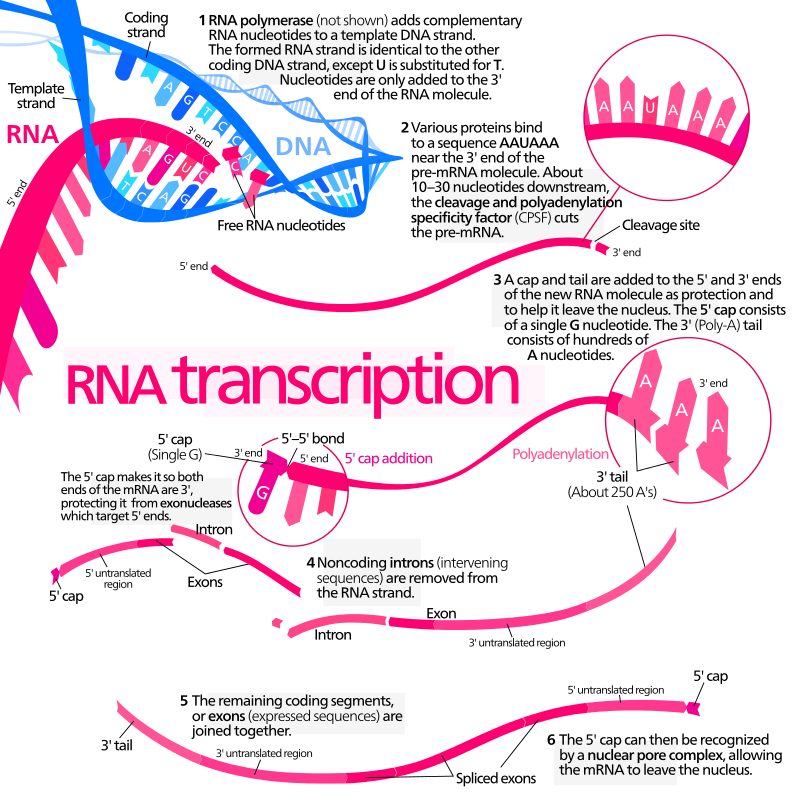Introduction
Transcription and translation are processes involved in central dogma in cell division of living organisms while genetic code is how DNA and RNA molecules carry genetic information in living organisms on Earth.
Definitions.
The above terms of genetics are defined as follows:
- Translation– this is the process through which messenger RNA is decoded and translated to form a protein otherwise referred to as a polypeptide sequence.
- Transcription– it involves the first step of gene expression in which a particular segment of DNA is copied into RNA, especially the messenger ribonucleic acid (mRNA) by enzyme polymerase.
- Genetic code-this is the set of rules by which the information encoded in genetic material i.e., RNA and DNA sequences, is translated into amino acid sequences by living organisms during cell division.
Transcription.
This is the stepping stone of gene-based gene expression. Nucleic acids (DNA and RNA) use base pairs of nucleotides as a complementary language. During this process, a DNA sequence is read by an RNA polymerase used to produce a complementary, antiparallel RNA strand known as a primary transcript. This process follows the below steps:
- RNA polymerase, in conjunction with one or more transcription factors, binds to promoter DNA.
- RNA polymerase forms a transcription bubble used in separation of the two strands of a DNA helix by breaking the hydrogen bonds between complementary DNA nucleotides.
- RNA nucleotides are added by RNA polymerase.
- With the assistance from RNA polymerase, RNA sugar-phosphate backbone is formed leading to the creation of an RNA strand.
- Hydrogen bonds in the RNA-DNA helix break thus freeing the freshly synthesized RNA strand.
- In eukaryotic cells, the RNA may be processed further.
- The RNA may exit to the cytoplasm through the nuclear pore complex or remain in the nucleus.

Translation.
The mRNA is decoded in the ribosome to produce a specific polypeptide which further folds into an active protein to perform its functions in the cell. The ribosome is used in facilitation by inducing the binding of complementary transfer RNA anticodon sequences to the codons of rRNA. Translation proceeds in:
- Initiation: ribosome assembles around the messenger RNA. The first transfer ribonucleic acid (tRNA) is attached at the start codon.
- Elongation: transfer RNA transports an amino acid to the transfer RNA corresponding to the next codon. The ribosome translocates to the next mRNA codon, thus continuing the process to create an amino acid.
- Termination: when a peptidyl transfer RNA meets a stop codon, the ribosome folds the polypeptide to form the final structure.
Genetic code.
Genetic code defines a mapping between triplet nucleotide sequences called codons and amino acids. The vast majority of genes are encoded with precisely the same code, thus referred to as the canonical or standard genetic. The gene is the portion of the genome that codes for a protein or an RNA. Genes that code for proteins are made up of tri-nucleotide units called codons where each code for a single amino acid. Thepurine bases guanine and adenine are larger and consist of two aromatic rings while the pyrimidine bases thymine and cytosine are smaller and made up of one aromatic ring.